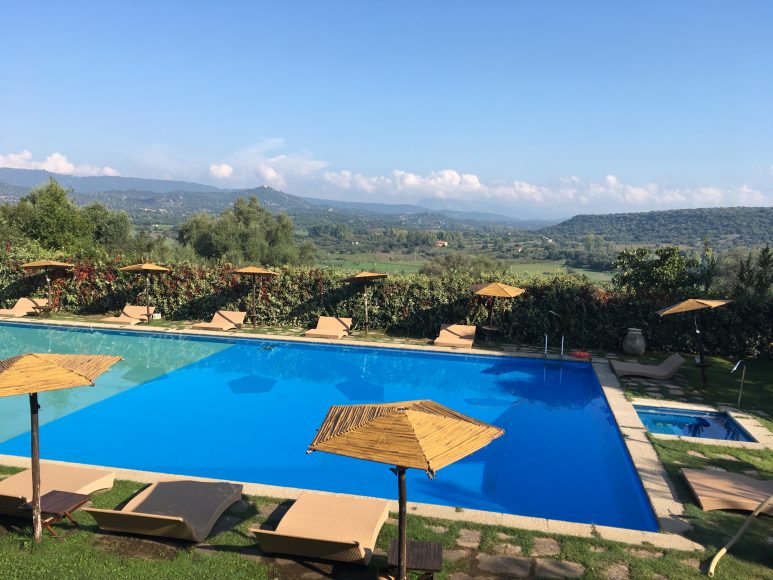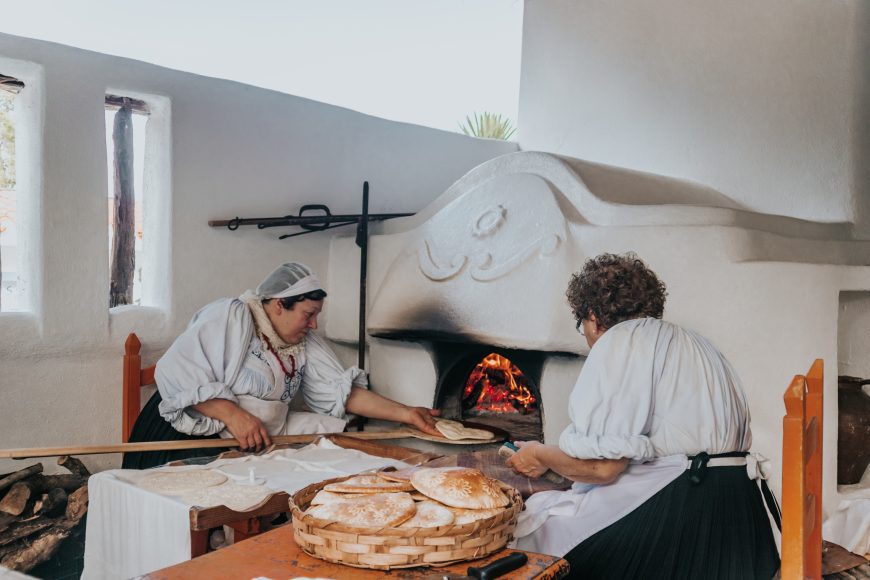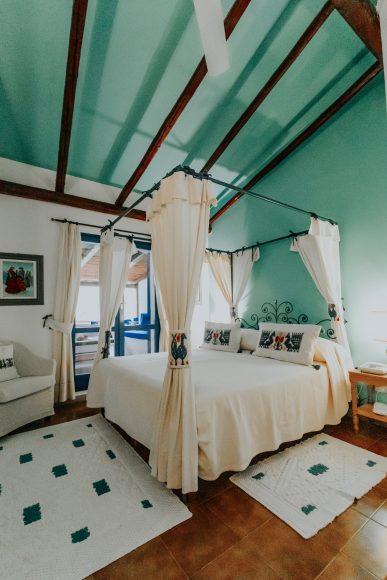Sardinia’s Costa Smeralda, or emerald coast, was developed and brought to prominence 60 years ago by Prince Karim Aga Khan. It conjures up images of superyachts, supermodels, supermoguls and minor European royalty — a saturnalia of summer decadence, which can be yours too, albeit at eye-watering prices.
But there is another Sardinia, a more authentic, more intense Sardinia, deep in the hinterland of this ravishing Italian island, the second-largest island in the Mediterranean. The Med may sparkle tantalizingly in the far distance as I leave Olbia Airport and hit the main highway, but I’m ignoring signs to the coast, heading inland instead, to the rugged hills and thick forests of the Barbagia region, a 90 minutes’ drive away. For once in my life (to partly echo Stevie Wonder), I feel I am not going to miss the ocean.
My home for the next three days is Su Gologone, a hotel named for the celebrated spring nearby. Established in 1967 by Pasqua and Peppeddu Palimmodo, it is now owned and run by their daughter, Giovanna, who apart from being a gifted hotelier is also a very talented and recognized artist and a woman who is passionate about preserving the traditions of her native Barbagia.
While it is not luxurious in the regular sense, Su Gologone exudes old-fashioned hospitality and good breeding. It is warm and welcoming and supremely comfortable, not merely a hotel but also a living museum and art gallery. Giovanna’s art is everywhere, but Su Gologone is a showcase too for other Sardinian artists and artisans. Wandering the hotel’s winding indoor corridors and outdoor paths, there are vivid ceramics, porcelain figurines, woven textiles, embroidered cushions and paintings all over. There’s also a unique collection of dolls (some, it must be said, a little spooky), dressed in local costume, hidden away in alcoves. In the hotel’s dedicated art center, guests can learn traditional local skills, such as embroidery and pottery, from the artists in residence, while for the cack-handed or just plain lazy like me, the ceramics and soft furnishings made in the craft studios can all be bought in the studio shop.
As much as a hotel, too, Su Gologone is a state of mind, a place of refuge, where life is a little calmer, “experience” more real, your senses somehow heightened. That’s why it has become a place of near-pilgrimage not only for artists, but also archaeologists, geologists, hikers, food lovers and just plain tourists, all with something to discover in these magic mountains. And that’s why if you are minded to visit, especially in high season, I have two words of advice for you: book early.
My bedroom, number 40, was utterly charming, brimming with light, a small iron-framed “letto matrimoniale” (double bed) made up with cool linen sheets and a locally woven bedspread in cheery blue and white. A small balcony overlooked the village rooftops toward the valley. The bathroom, by contrast, was fascinatingly hideous, by which I mean no discourtesy — it’s well known that the Italian aesthetic flies out the window when it comes to bathrooms. The Jacuzzi bath and shower in a molded plastic compartment resembled some kind of particularly sadistic airport scanner, while the bathrobes were a dispiriting shade of industrial blue. Nevertheless, the bathroom was spit-spot clean and the hot water ran properly hot. More to the point I hadn’t come to Su Gologone to mooch around the bathroom in a towelling robe. There were hills to climb, natural wonders to behold, local wine to chug.
One morning I set off with Gianni, a local guide, for a hike in the Supramonte, the dramatic mountain range of central Sardinia. The ground was stony, the air was fresh and the views were dizzying. Over a rustic lunch of prosciutto, salami and tomatoes, roughly cut up with a penknife and washed down with lashings of local Cannonau red wine, Gianni told me how only 80 years ago the entire area was forest, the trees cut down for timber for use as sleepers on the Italian railways. Another morning, we walk to the great spring of Su Gologone itself, just a few hundred yards from the hotel, where water gushes out from a deep, vertiginous ravine. It’s a mystical place, which seems as old as time. In the early evening in the local bar in Oliena, Abba blaring their greatest hits, we knocked back shots of brandy with a handful of shepherds who, discovering I was a foreigner, refused to let me pay for a single drink. (Only Italian shepherds, by the way, can wear white chinos with pink or purple Ralph Lauren polo shirts and still be taken seriously.)
Back at Su Gologone, gastronomy looms large. In the hotel bars, the olives are so fresh they almost squelch. I eat a bowl of them before dinner, sipping a local white Vermentino so dry it squeaks. In the rustic-chic main dining room, locals pour in on Friday and Saturday evenings to rub shoulders with hotel guests. Pan Brattau, crisp, pizza-type bread, spread with tomato and topped with a fried egg and pecorino, is a dish you could eat as your last meal and die happy. Next up are antipasti of fried offal, far more delicious than they might sound, and pasta dishes like culurgiones, ravioli filled with ricotta. The house speciality is porceddu (suckling piglet), spit-roasted before your eyes on an open grill in the corner of the restaurant.
Alternatively, if at dusk you climb what seems like half a mountain, ascending via steps and steep terraces, you will eventually come to Il Nido del Pane, another of the hotel’s restaurants (though restaurant seems too formal a word for this outdoor space.) Here, you sit in an enchanted sloping courtyard under the stars, while two ladies of advanced years in full local dress bake traditional carasau bread in a wood-burning oven, and you feast from a groaning buffet of typical local dishes. Dinner goes on long into the perfumed, velvety Sardinian night.
On my last day, after an indolent morning spent painting, and later swimming in the hotel pool, I headed into Oliena in search of ice cream, but the village’s single gelateria was closed. Disappointment must have been written all over my face, because a complete stranger approached me and asked me what was the matter. “But sir,” he said, when I explained my plight, “for the best ice cream in Oliena, you must surely go to…Su Gologone!” I might have known. Back at the hotel, I tucked into home-made ricotta gelato with pine nuts, riotously good, before packing my bags for an afternoon departure and saying a fond farewell to this blissful corner of the world. And as the sparkling Mediterranean once again hove into view as we approached the airport, I realized my premonition had been right: For once in my life I hadn’t missed the seaside one bit.
How to get there: Air Italy, a new airline, or at least new in name — the company was formerly known as Meridiana — has more than 50 years flying experience and will fly you from New York to Milan and then on to Sardinia (its home base) with a minimum of fuss. With just 24 seats in its luxurious business-class cabin, expect cocktails (or mocktails) before take-off, an excellent dinner and full turn-down service of your nearly flat-bed, with pajamas provided for you to change into for the short overnight flight. “Buona notte” and “buon viaggio” — I’m hooked on Air Italy before we’ve even reached our cruising altitude of 40,000 feet.
For more on Air Italy and its routes from the USA to Italy, visit airitaly.com For more on Su Gologone, see sugologone.it/en/




